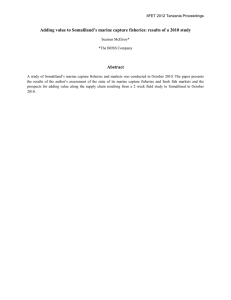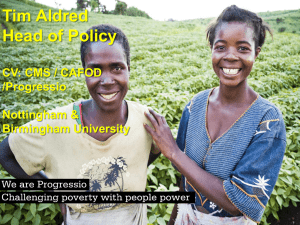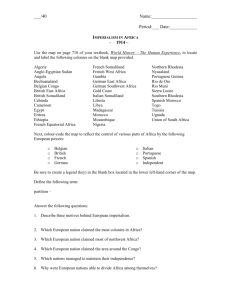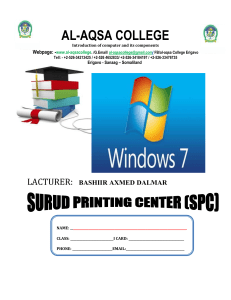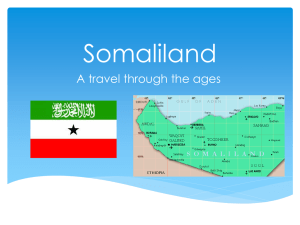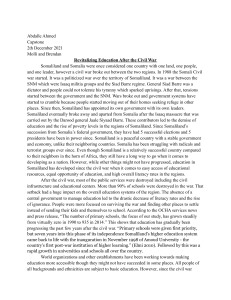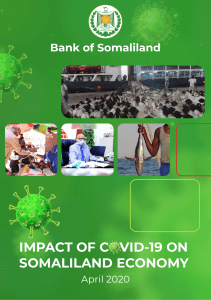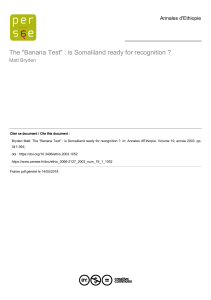Highe Education assignment for Abdirahman last update
advertisement
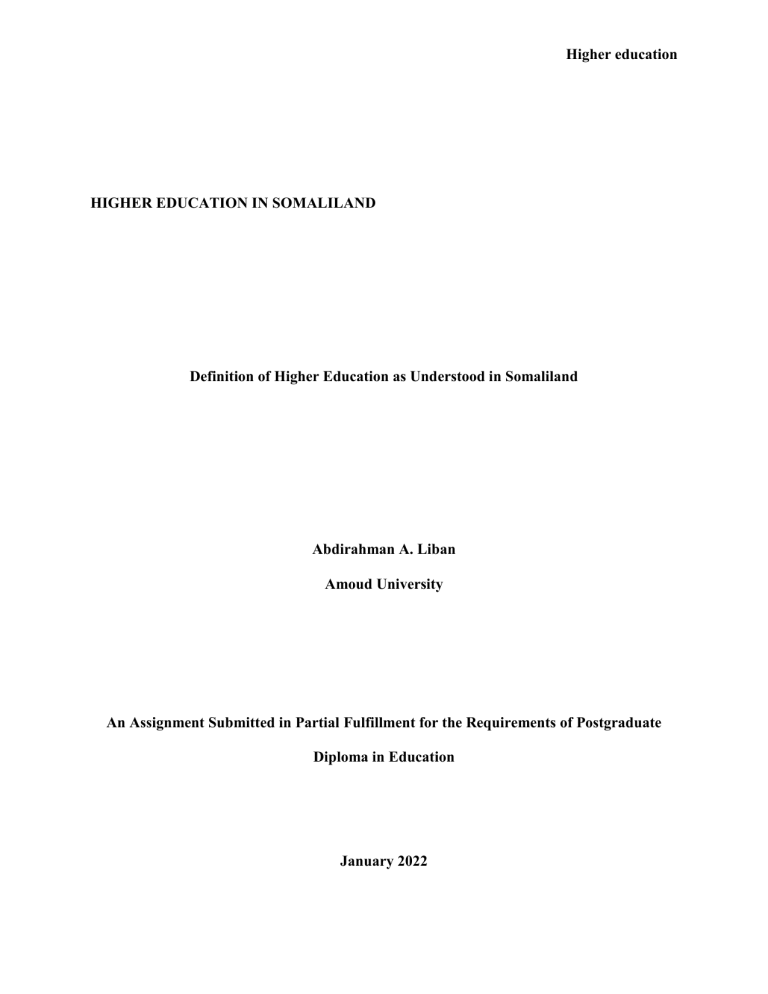
Higher education HIGHER EDUCATION IN SOMALILAND Definition of Higher Education as Understood in Somaliland Abdirahman A. Liban Amoud University An Assignment Submitted in Partial Fulfillment for the Requirements of Postgraduate Diploma in Education January 2022 Higher education ii Abbreviations and Acronyms HE - Higher Education HEIs - Higher Education Institutions SEDSA - Somaliland Education Sector Analysis SNEP - Somaliland National Education Policy Higher education iii Table of Contents Abbreviations and Acronyms ......................................................................................................... ii Table of Contents ........................................................................................................................... iii Higher Education in Somaliland ......................................... Ошибка! Закладка не определена. REFERENCES ............................................................................................................................... 4 Higher education 1 The creation of academia has been the human race’s greatest success at countering the inevitable loss of human capital and knowledge that each general must endure. While the education of ruling, clerical and military elites has existed since the inception of civilization, the system that would characterize as a university did not originate until the medieval era. The first universities were housed in Bologna, Italy and Paris, France. The success of Paris and Bologna was evident across the globe and their replication was inevitable. The emerging of institutions in Oxford and Cambridge played a pivotal role in the “intellectual controversies of the later middle ages. Later than, Universities eventually evolved to provide a wider range of academic programs, utilize specialized research professors, and even begin to see the emergence of state supported universities (Himanka, 2015). These evolutions by then created what is now termed higher education, and this is what this paper is going to conceptualize from globe, regional and local perspective. Globally, higher education can be defined differently. In the United States, higher education is considered to be voluntary studies beyond the high school level. It is defined as Higher education refers to postsecondary education, which is offered at institutions such as colleges, universities, community colleges, and vocational-technical schools (Barnett, 1990). In addition, higher education is tertiary education leading to award of an academic degree. Higher education, also called post-secondary education, third-level or tertiary education, is an optional final stage of formal learning that occurs after completion of secondary education (Sharipov, 2020). Higher education is a form of formal learning, in which education is provided by universities, colleges, graduate school, etc. and completed with a diploma. Higher education also includes teacher-training schools, junior colleges, and institutes of technology and technical colleges (Miller, 2014). Higher education 2 In Africa, higher education is critical to Africa’s development yet African universities and scholars contribute very little to the global knowledge economy. In the Kenyan system of education, university education is the epitome of higher education. Higher education is necessary in generating a pool of highly qualified personnel in various specialized skills and the potential for promoting higher production of human as well as economic capital and other resources in their individual capacities. The role of higher or university education is to provide mature and conscientious graduates with ability and desire to contribute to the development of the country and provide for national services which reflect the national and cultural heritages (Gathitu, 2010). In the process develop and transmit knowledge and stimulate the intellectual life and cultural development of the country to produce high level labour in scientific and technological fields to meet the social and cultural as well as economic development needs of the nation. Each country no matter how small has its own system he conceptualize higher education. Here and after, networking is expected to offer chances for different higher education institutions in Africa and in other continents to pool their resources. The Higher Education (HE) sector is relatively new in Somaliland. As a result, data on university education in Somaliland is extremely limited due to lack of regulation of institutions and insufficient Ministry involvement. The first university, Amoud University, was launched in 1998. By 2011, the number of higher education institutions registered with the MOEHS reached 16, with a total student population of about 15,000. Each of the original six regions now has at least one university. There are seven public universities located in each of the Somaliland regions. Additionally, the number of private universities has increased to 35 to accommodate public demand for tertiary education [Somaliland Education Sector Analysis (SEDSA), 2017]. Higher education 3 In conclusion, this paper presented the different definitions of higher education from global perspective, through regional perspective to local perspective. The paper shed-off the origins of higher education and how it started through its inventions. It also highlighted that higher education is generally defined as the formal education person came across after secondary education whatever type it is. In addition, the paper presents some of the common higher education institutions which include teacher-training schools, junior colleges, and institutes of technology and technical colleges. The paper also pointed that networking is expected to offer chances for different higher education institutions in Africa and in other continents to pool their resources. Finally, the paper presented that higher education is relatively new in Somaliland, and data on university education in Somaliland is extremely limited due to lack of regulation of institutions and insufficient Ministry involvement. Higher education 4 REFERENCES Barnett, R. (1990). The idea of higher education. McGraw-Hill Education (UK). Gathitu, M. W. (2010). Higher education in Kenya: an assessment of its rapid expansion and future prospects (Doctoral dissertation, University of Nairobi, Kenya). Himanka, J. (2015). On the Aristotelian origins of higher education. Higher education, 69(1), 117-128. Miller, M. T. (2014). The global scholar: Challenges and opportunities of working with transational faculty in higher education. NewYork, USA. Presbyterian publishers. Sharipov, F. (2020). Internationalization of higher education: definition and description. Mental Enlightenment Scientific-Methodological Journal, 2020(1), 127-138. Somaliland, E. S. A. (2017). Republic of Somaliland ministry of education and higher studies: Somaliland education sector analysis. Hargiesa, Somaliland: Sagal Jet publishers.
